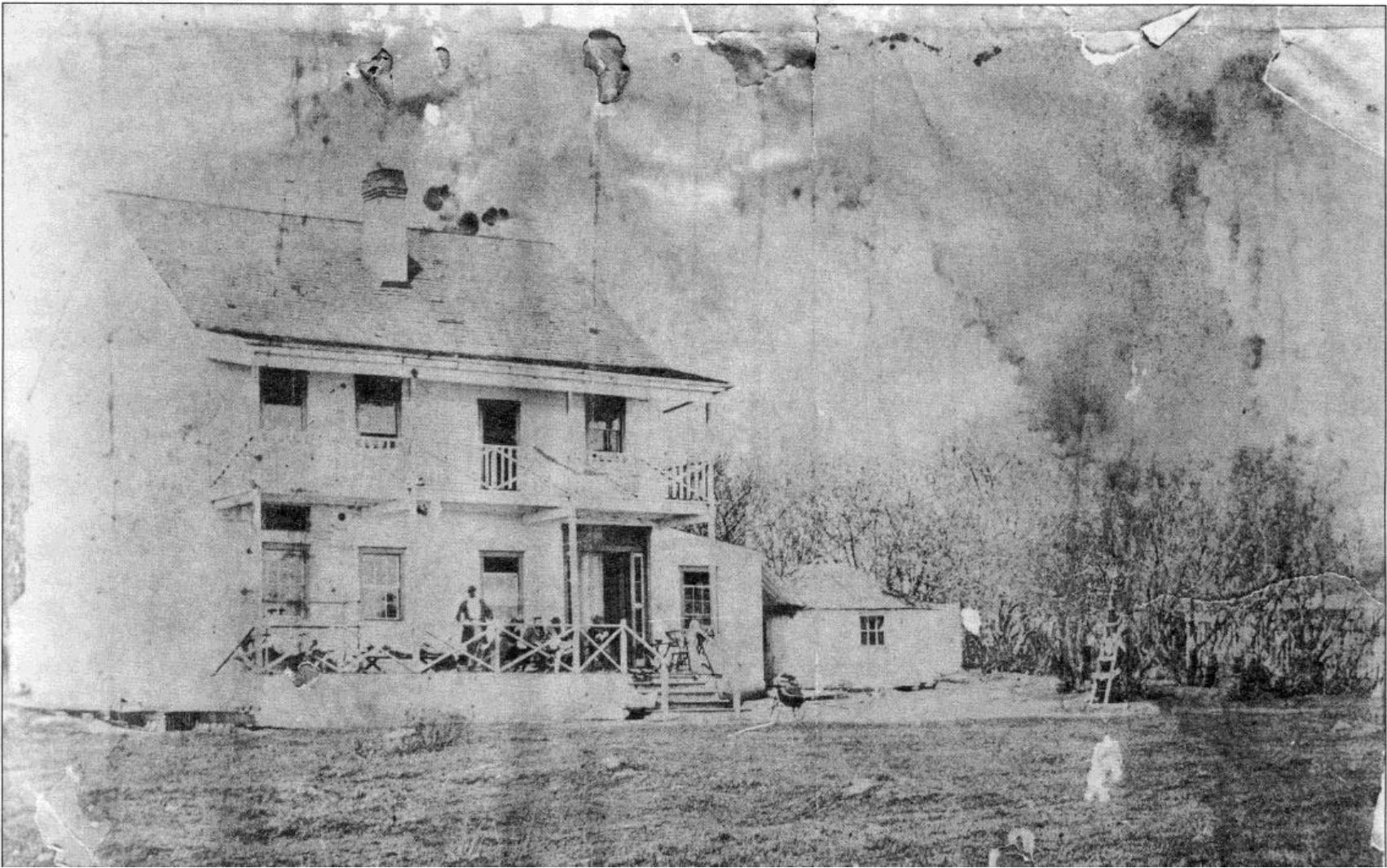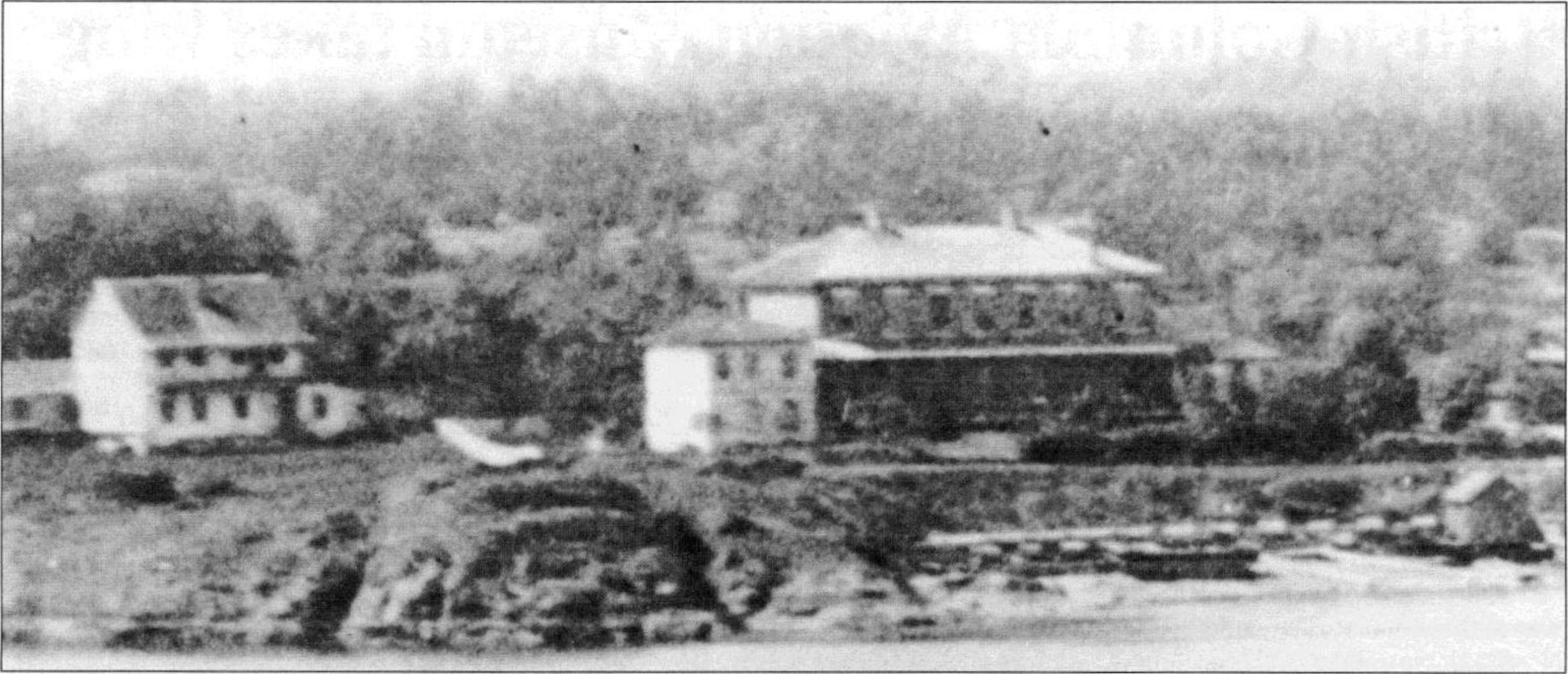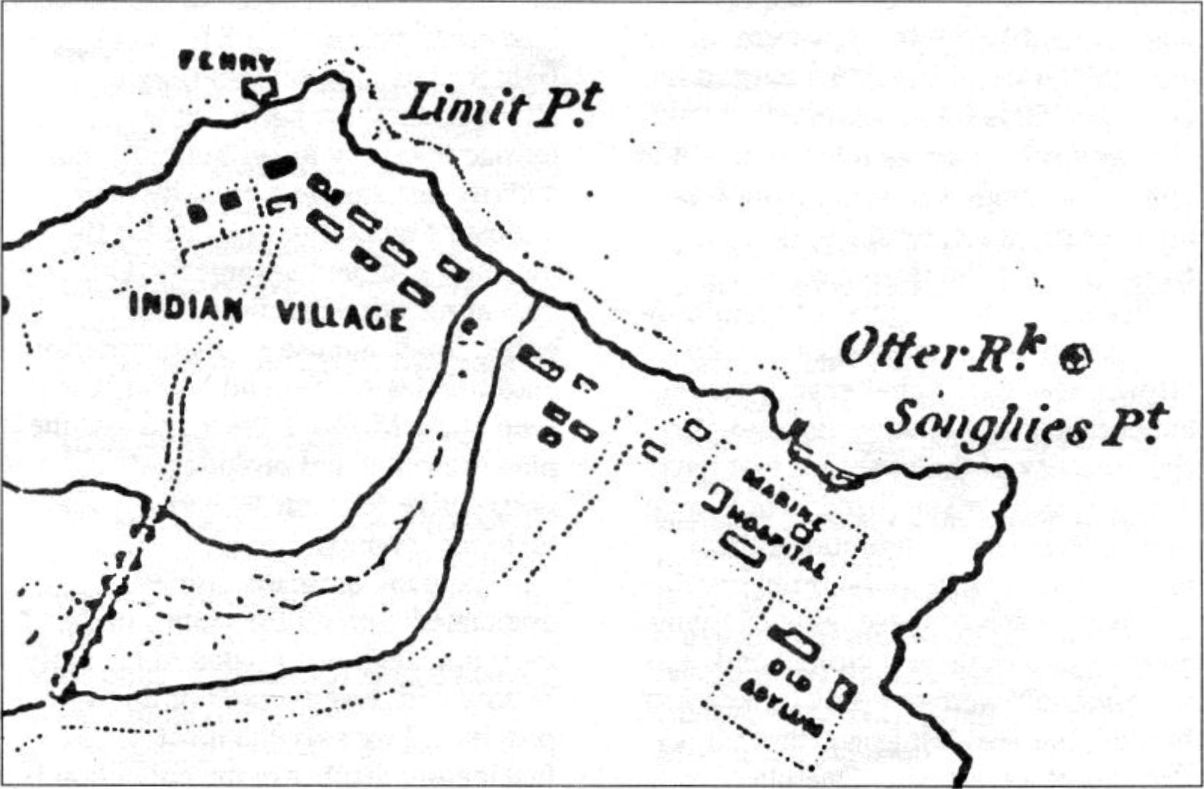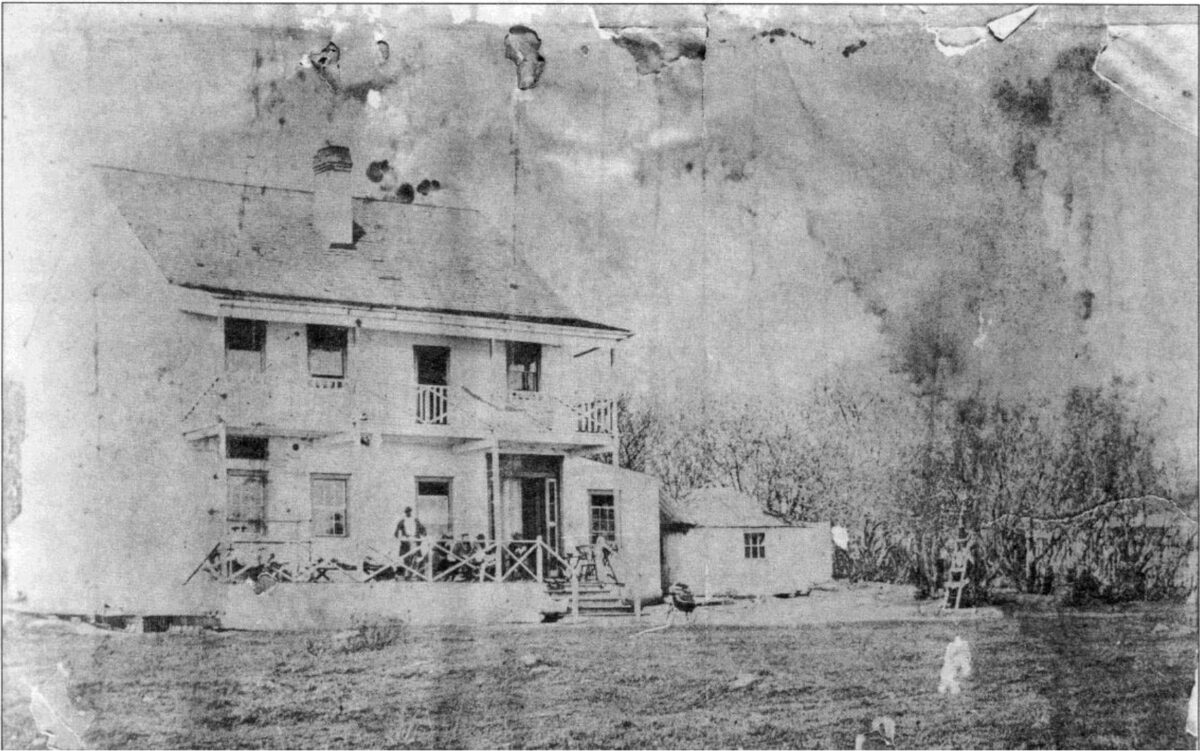Originally published in Discovery: Friends of the Royal British Columbia Museum Quarterly Review, 19(3), 4-5.
By Grant Keddie. Summer 1991.
Introduction
In the early 1850s, temporary locations – usually private homes – served as Victoria’s first public hospitals. People who were declared insane were put with prisoners in the Public Jail. In 1853, Governor James Douglas was ordered to construct what became Vancouver Island’s first real hospital, the Esquimalt Naval Hospital. It was established for wounded British veterans of the Crimean War. The Crimean soldiers never came, but the hospital eventually was used in Esquimalt as a naval hospital.
In 1858, Reverend Edward Cridge argued that “We ought immediately to unite and found a hospital, and an asylum and having founded it, subscribe to its maintenance.” Governor Douglas immediately provided government funds for a temporary hospital on the comer of Broad and Yates streets, and put Reverend Cridge in charge.

The Royal Victoria Hospital
However, Governor Douglas wanted a more permanent hospital, and in 1859 set up a provisional committee of 14 persons, chaired by A.G. Dallas and including three surgeons: J.S. Helmcken of the Hudson’s Bay Company, H. Piers of H.M.S. Satellite, and H.A. Tuzo.
The Royal Victoria Hospital Committee intended that the new establishment be paid for by public donations, although the government would provide “assistance in the conduct of the institution”. The committee stated that “An efficient public hospital, will render the introduction of infectious diseases by ships or otherwise more difficult as well as conduce to the more efficient treatment of such cases.” The two- storey wooden building was to be 36 by 30 feet (II x 9 m) and “built in a comfortable and substantial manner, and capable of accommodating 20 patients”.
By 26 March 1859, Governor Douglas appropriated $2 000, and construction of the Royal Victoria Hospital began on the Songhees Indian reserve. It was located above Songhees Point (often referred to as Hospital Point) on Victoria’s inner harbour across from the Parliament buildings. Of the 160 patients admitted between May 1859 and 3 July 1860, 21 died, eight remained, and the rest were discharged. Deaths were listed as resulting from such causes as shotgun wounds, syphilis, consumption, brain fever, dropsy, dyspepsia and bronchitis.
On 30 July 1860, The Royal Hospital (as its name was usually shortened to) was having serious financial problems. The Victoria Daily Gazette stated emphatically: “Unless it receives speedy aid from the Government it must be closed. The expenses are about $500 per month.” The Government House of Assembly voted 300 pounds sterling for its support, and public pressure was applied to enact a law providing for regular maintenance. Until this time it had survived by voluntary subscriptions from private citizens, the profits of an occasional ball, theatrical performance or concert, and church collections.
A major smallpox outbreak in 1862 (mostly among native people) resulted in the building of two temporary structures near the Royal Hospital for victims of this disease.
In 1869, The Royal Victoria Hospital and the Female Infirmary, created on Pandora Avenue in 1864, were amalgamated as The Royal Hospital. The male patients were moved from the reserve to the expanded Pandora Avenue location. By 1885, most patients with contagious diseases were sent to the Quarantine Hospital at Albert Head.
In 1887, to celebrate Queen Victoria’s 50th Jubilee, a newer Provincial Royal Jubilee Hospital was proposed. The Royal Hospital was replaced by this new establishment when it opened on Richmond Street in 1890. Four quarantine cottages were built on the site to handle a smallpox epidemic in July 1893, but after September of that year most patients needing quarantine were housed at the new facilities at William Head. In 1938, the official title of the Richmond Street location became “The Royal Jubilee Hospital”.

Insane Asylum
The Royal Victoria Hospital building on the Indian reserve served as another kind of hospital. It was reopened 12 October 1872 as British Columbia’s first insane asylum. There were 18 admissions of what in those primitive days of our health care system were called lunatics. It was in 1873, after the creation of this establishment (officially called Asylum for the Insane), that the province developed its first Insane Asylums Act.
The institution remained open until 17 May 1878, when a new facility was built in New Westminster. The wooden-structured Victoria building remained standing until 1890.

The Marine Hospital
A new brick building with a stone foundation was built on the adjoining property just to the north-east of the asylum. This was the Marine Hospital, which opened on 1 September 1874. It consisted of the main hospital building, with an outbuilding at its north side that served as an outer kitchen, scullery and dissecting room. It also included a two-storey medical officers’ residence with six rooms to the south-east. This was a non-military sailors’ hospital. Ships entering the harbour paid dues that allowed their crews access to these facilities. On 28 February 1911, the Legislative Assembly passed a resolution to close the Marine Hospital. It was vacated by April 1912. and torn down later that year.
